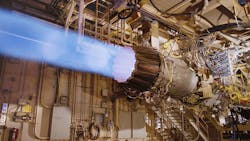Jet engine builder Pratt & Whitney confirmed it has finalized the terms of its contract with the U.S. Dept. of Defense to build engines for the fifth series of the F-35 fighter program. The terms were left unsettled when the series was approved for construction earlier this year.
Pratt & Whitney will earn $1 billion to produce 35 engines — 32 to be installed in F-35 warplanes, and three spares.
Pratt & Whitney is a subsidiary of United Technologies Corp. that builds the F-135 engine for the F-35 fighter jet. The negotiations have been ongoing for many months, against the background of federal budget sequestration and the need to contain cost overruns on the program.
"As we move forward in the program, the key factors in driving down cost will be to increase the ramp rate and volume of engines," stated Chris Flynn, head of Pratt & Whitney’s F135 engine program. "Achieving greater program stability will help us to progress further down the cost curve to meet the price reduction objectives on the program."
The F-35Lightning II is a single-engine, fifth-generation jet with stealth capability, to be used by the U.S. Air Force, U.S. Navy, U.S. Marine Corps, and Great Britain’s Royal Air Force, for ground attack, reconnaissance, and air defense missions. Lockheed Martin is the primary contractor for the jet building program, and it previously settled its terms for the fifth round of F-35 construction.
The main power plant option for the F-35 is Pratt & Whitney’s F135: it’s an afterburning two-shaft engine, with a three-stage fan (low pressure) and a six-stage high-pressure (HP) compressor. The hot section has an annular combustor with a single-stage HP turbine unit and a two-stage LP turbine. The afterburner has a variable converging-diverging nozzle.
There are several variants of the basic design, including a conventional, forward thrust variant and a multi-cycle variant for jets required to perform “short takeoffs and vertical landings.”
The first F135 engines were delivered in 2009, and 98 have been produced for the F-35 program.
About the Author
Robert Brooks
Content Director
Robert Brooks has been a business-to-business reporter, writer, editor, and columnist for more than 20 years, specializing in the primary metal and basic manufacturing industries.
